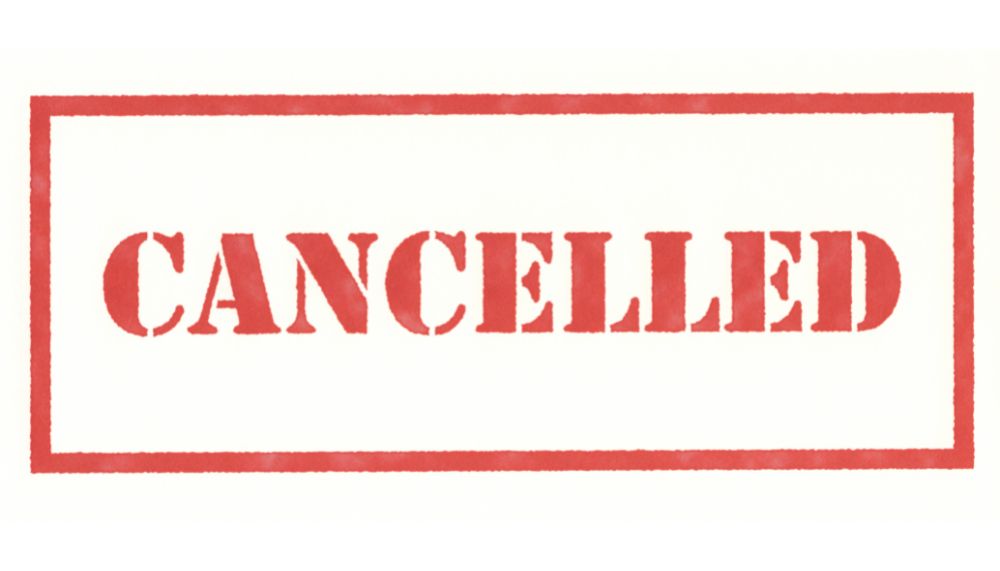What Does it Mean When a Trademark is Cancelled?

With trademark laws being expansive and complicated, managing it all on your own can be next to impossible. If you’re currently facing an issue regarding trademark cancellation, it can be difficult to know what your first steps should be. If you’re an owner of a trademark, you need to understand your rights and responsibilities, as well as the protections you have for your trademark.
If you have a registered trademark with the United States Patent and Trademark Office (USPTO) and are facing a cancellation, or you think you may have the evidence to challenge a trademark, learning about your next moves is vital.

What Is a Canceled Trademark?
A canceled trademark is a trademark that, for one reason or another, has been deemed invalid. When a trademark’s registration has been terminated, that means it can be registered by another person or business. It also means the trademark cannot be used in any way to deny the registration of a similar trademark. Once a trademark has been canceled, it is considered dead. The owner of this trademark is no longer protected by any of the benefits of a registered trademark.
How Is a Trademark Canceled?
A trademark cancellation proceeding is akin to a civil lawsuit. An accuser has the opportunity to provide evidence as to why a trademark should be canceled. Often this will occur when the defendant is maintaining a trademark to keep it away from the accuser. However, this isn’t always the case.
The first step in the trademark cancellation process is for a complaint, or the petition to cancel, to be filed. This is typically brought before the TTAB, or the Trademark Trial and Appeal Board, although some cases may appear before the federal courts. It must be proven that failing to cancel the trademark will cause harm in some way. It isn’t necessary to prove that harm has already occurred, so this is a bit more lenient than it may initially appear.
Why Do Cancellations Happen?
While cases are brought before the TTAB, the USPTO can also cancel trademarks for a number of reasons. Some of these include:
- A proper renewal form wasn’t filed.
- A declaration of use wasn’t filed properly.
- The owner of the trademark failed to reply to a post-registration office action.
- The owner of the trademark chose to file a surrender of trademark registration form.
Cancellations can happen even if the owner of the trademark is not aware, and they often do. Common situations where cancellations occur without an owner’s knowledge are if the proper forms are not filed correctly or if the owner was unaware that the trademark needed to be renewed and maintained.
A trademark owner may also voluntarily allow the cancellation of the trademark. This can happen for a number of reasons, including lack of funds to maintain the trademark, the cost/benefit ratio not being worth keeping it, or to end a trademark challenge.
The Lanham Act
First signed into law in 1947 by President Truman, the Lanham Act performs a few different duties in regard to trademark law. First, it lays out solutions to trademark infringement. It also describes the rules surrounding trademark dilution, as well as discussing the available civil actions and the exact situations that establish trademark infringement.
Additionally, the Lanham Act lays out the workings for filing a federal trademark registration. It also discusses when trademark owners are entitled to protection as well as other guidelines for the task of developing trademarks.
Trademark Cancellation vs. Trademark Opposition
Challenging a trademark can come in two different forms: trademark cancellation and trademark opposition. It’s critical to understand the distinctions between these two forms. Trademark cancellation, as previously discussed, is when a petitioning party applies for a cancellation of the registered trademark. Sometimes this happens because the plaintiff believes the existing trademark is infringing on their rights.
A trademark opposition is the other side of the coin. Trademark opposition happens when the registration of a prospective trademark is opposed by another party. These two things are different mostly due to the time frame in which an objection is raised. A cancellation occurs after a trademark has been registered, while an opposition occurs before it has been registered.
Is It Possible to Reinstate a Canceled Trademark?
It is possible to reinstate a canceled trademark, but it is very complicated for this to be done. The main way this can happen is by proving that the USPTO has made an error in filing. However, this complaint must be filed within a specified period.
The owner may also file a motion to dismiss the default judgment issued by the TTAB after it has allowed a petition for cancellation. Whether or not this occurs is up to the TTAB entirely, and it isn’t very likely that this will happen.
Within Five Years
There are also different circumstances for cancellations, depending on the amount of time that has passed. If less than five years have occurred, a different set of reasons may qualify for a cancellation. These reasons include:
- Significant mistakes occurred in the initial filing for the trademark.
- The registration was fraudulent.
- The owner didn’t have any intention to use the trademark, or it hasn’t been used.
- The item being trademarked was a location, a last name, or something else very descriptive on a primary level.
- You have been using the trademark for longer than the owner of the trademark.
- The trademark is in some way deceptive.
- In the last three years, the trademark has been neither defended nor used.
- The trademark may be mistaken for your work or property.
Hiring an Orange County Trademark Cancellation Lawyer
Supporting your trademark to keep it alive or challenging the use of an existing trademark is the work of the team of lawyers at Blake & Ayaz. Our expert attorneys have the wealth of knowledge that comes with first-hand experience and over 60 years of combined practice. If you need legal advice for your trademark cancellation case, look no further than Blake & Ayaz, your Orange County trademark attorneys. Contact us today for your consultation.



